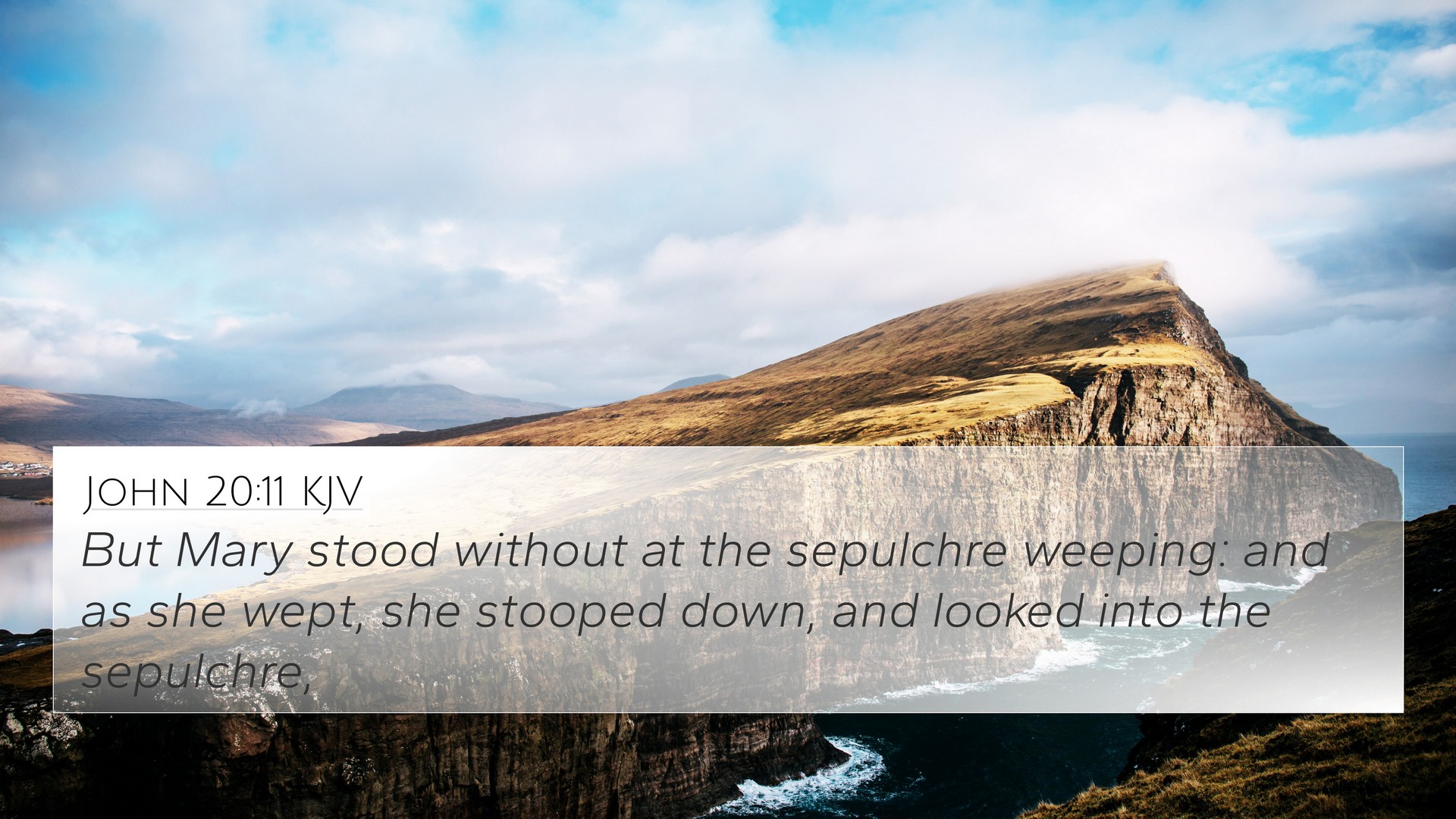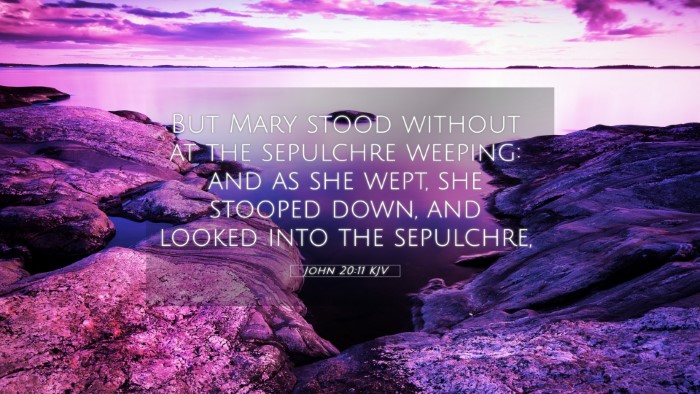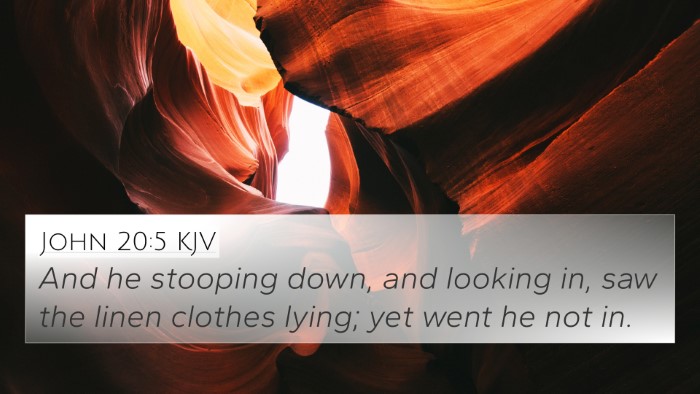Understanding John 20:11
Verse: John 20:11
“But Mary stood without at the sepulcher weeping: and as she wept, she stooped down, and looked into the sepulcher.”
Overview
In John 20:11, we find Mary Magdalene at the forefront of the resurrection narrative. This poignant moment captures her deep sorrow and devotion as she seeks the body of Jesus. The verse exemplifies the emotions of loss and yearning that permeate the resurrection story, highlighting her role as a primary witness to the events following Christ's crucifixion.
Contextual Analysis
This verse occurs in the context of Christ's resurrection. Mary, who had been present at the crucifixion, now finds herself at the tomb in distress. The significance of her presence serves as a precursor to the revelation of the risen Christ. By analyzing this verse, we draw connections between grief and the hope of resurrection.
Commentary Insights
- Matthew Henry: Henry emphasizes the importance of Mary’s devotion, noting that amid her sorrow, she remains near the tomb—a testament to her love for Jesus. He points out that her weeping signifies the depth of her loss, and this emotional state sets the stage for the forthcoming revelation of the risen Christ.
- Albert Barnes: Barnes outlines the emotional backdrop of the scene. He explains that Mary's actions demonstrate her determination to honor Jesus even in death, which contrasts sharply with the disbelief shown by others. He notes that her looking into the sepulcher symbolizes a search for understanding amidst her grief.
- Adam Clarke: Clarke offers a more theological interpretation, suggesting that Mary's weeping illustrates the pain of separation from Christ. He draws parallels to the nature of faith, indicating that her sorrow will soon transform into joy with the resurrection, thereby encapsulating the essence of Christian hope.
Cross-References
John 20:11 resonates with several key verses throughout the Bible that share similar themes of mourning, resurrection, and the recognition of Jesus as the Messiah. The following are notable cross-references that enrich our understanding of this verse:
- Luke 24:1-7: This passage recounts the women discovering the empty tomb and the angels’ announcement of Christ’s resurrection.
- Matthew 28:1-10: Similar to Luke, this account describes Mary Magdalene’s encounter with the risen Christ.
- Mark 16:9-11: This verses highlight Mary as the first to witness the risen Lord and communicate this to the disciples.
- John 20:14-17: Following verse 11, this section illustrates Mary’s first encounter with the risen Jesus, marking a significant transition from despair to hope.
- Isaiah 53:3: This prophecy about the suffering servant reflects the sorrow and rejection experienced not only by Christ but also by His followers.
- Psalm 30:5: "Weeping may endure for a night, but joy comes in the morning," resonates as a promise of restoration amidst sorrow.
- Romans 6:5: This verse ties into the theme of resurrection, asserting that through Christ's death and resurrection, believers are promised new life.
- Revelation 21:4: A promise where God wipes away every tear, connecting to Mary's grief in John 20:11 and the ultimate joy in heaven.
- Acts 1:3: Here, the risen Christ presents Himself, underscoring the certainty of His resurrection, which Mary first witnesses.
- 1 Peter 1:3: Praises God for the living hope through the resurrection of Jesus Christ, reflecting the transformative nature of Mary’s experience.
Thematic Connections
John 20:11 serves as a powerful reminder of the themes of loss, love, and resurrection. The narrative captures the essence of human emotion faced with divine providence. By exploring the interconnected nature of scripture, we can see how Mary's encounter reflects broader theological concepts throughout the Bible.
Conclusion
In conclusion, John 20:11 not only highlights Mary Magdalene’s grief but also sets a definitive stage for one of the most pivotal moments in Christian belief—Christ's resurrection. The commentaries and cross-references provided deepen our understanding of this passage and connect it to a broader biblical narrative encompassing hope, transformation, and ultimate triumph over death.
Resources for Further Study
For those interested in delving deeper into the connections between Bible verses, several tools and resources can enhance your study:
- Utilize a Bible Concordance to find related scriptures.
- Consider a Cross-Reference Bible Study guide to track thematic connections.
- Engage with a Bible Reference Resource for comprehensive insights.
- Explore methods for Cross-Referencing Bible Study to better understand themes and motifs.
- Leverage Cross-Reference Systems for efficiently locating scriptures that relate to specific verses.



